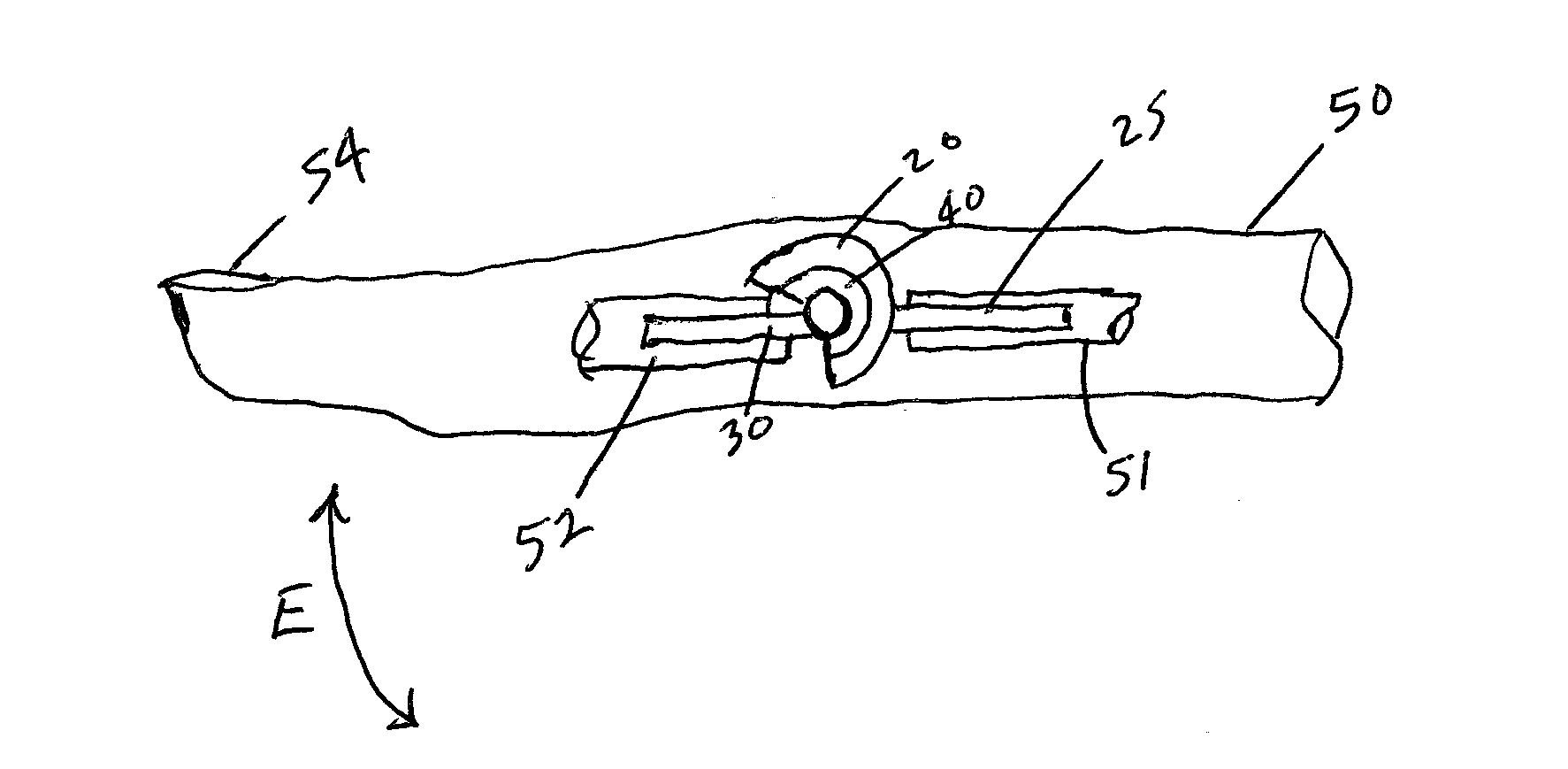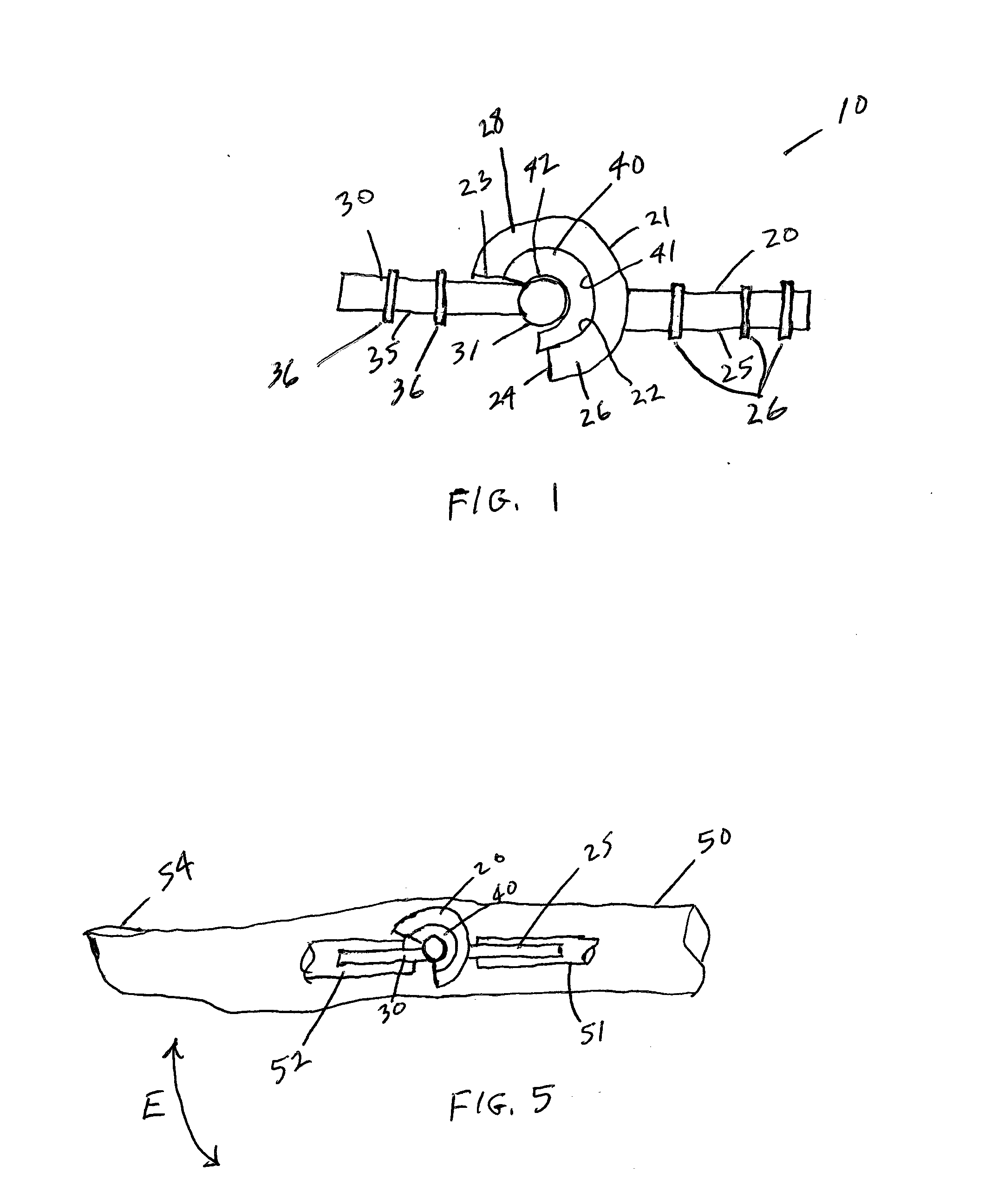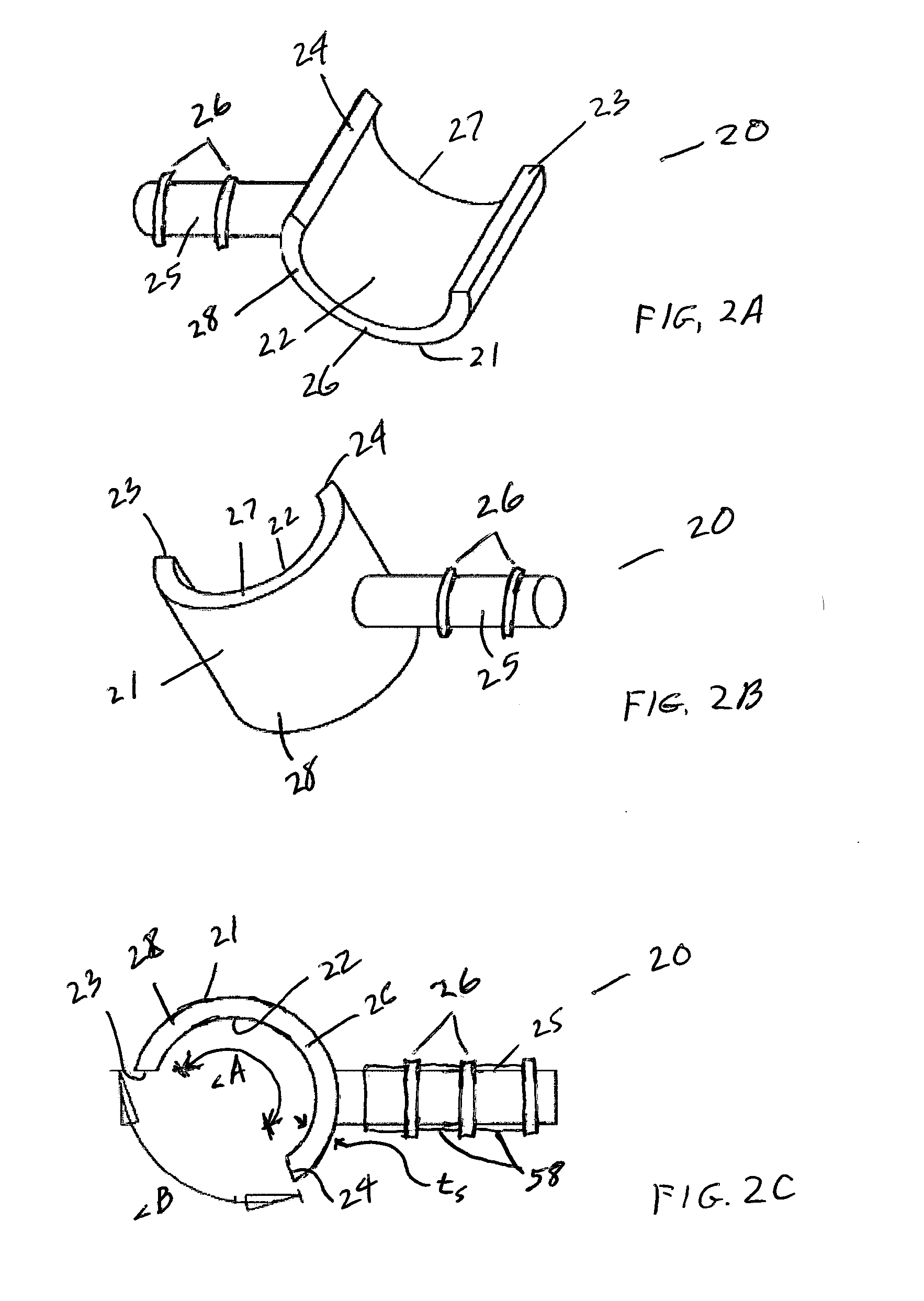Implants and Methods of Making and Using the Same
- Summary
- Abstract
- Description
- Claims
- Application Information
AI Technical Summary
Benefits of technology
Problems solved by technology
Method used
Image
Examples
example 1
Manufacture of Implants
[0048]Implants, similar to implant 10 shown in FIGS. 1-5, were prepared. Engineering analysis, SolidWorks™ 3-D modeling and finite element analysis were used to optimize and validate the benefits of the implant design. All results suggested that the implant 10 design would not have a material failure in high cyclical loading environments, while restoring the natural range of motion of a joint, such as the PIP joint.
example 2
Implantation of an Implant Into a Cadaver
[0049]The following surgical procedure was utilized to implant an implant 10 of Example 1 into a cadaver. A vertical cut to the medial side of the PIP joint of the cadaver was made. Once the cut was made, the distal and proximal phalanges were bent to allow exposure of their articulating surfaces. The distal phalange was drilled and the articulating cylindrical head (e.g., distal component stem 35 of distal component 30) was implanted into the distal phalanges. The proximal phalange was drilled and the socket component (i.e., proximal stem 35 of proximal component 30) was implanted into the proximal phalange. The joint was completed by placing the articulating cylindrical head 38 of distal component 30 inside the cylindrical socket 28 of proximal component 20 with cup component 40 positioned therebetween.
[0050]After insertion, fixation, and testing, ligaments and tendons were reattached, and sutures were used to close the incision.
[0051]It sh...
PUM
| Property | Measurement | Unit |
|---|---|---|
| Thickness | aaaaa | aaaaa |
| Thickness | aaaaa | aaaaa |
| Angle | aaaaa | aaaaa |
Abstract
Description
Claims
Application Information
 Login to View More
Login to View More - R&D
- Intellectual Property
- Life Sciences
- Materials
- Tech Scout
- Unparalleled Data Quality
- Higher Quality Content
- 60% Fewer Hallucinations
Browse by: Latest US Patents, China's latest patents, Technical Efficacy Thesaurus, Application Domain, Technology Topic, Popular Technical Reports.
© 2025 PatSnap. All rights reserved.Legal|Privacy policy|Modern Slavery Act Transparency Statement|Sitemap|About US| Contact US: help@patsnap.com



